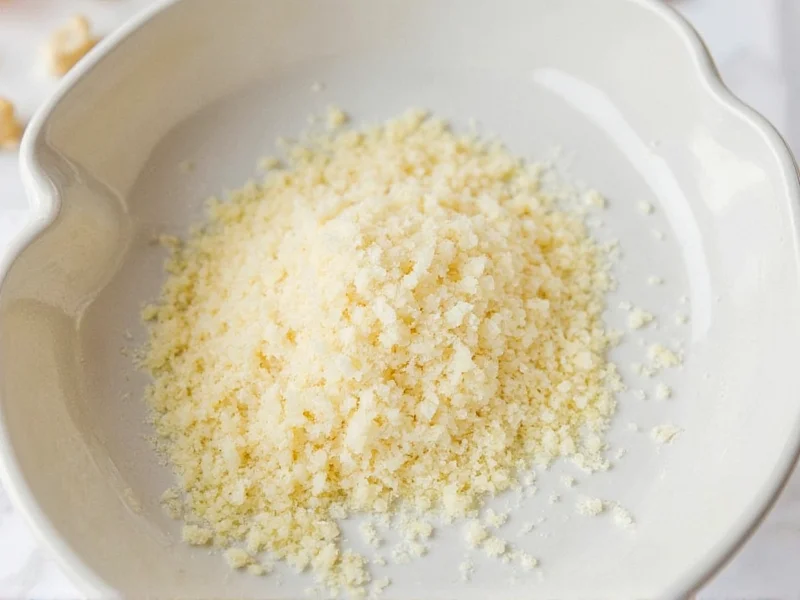Running out of garlic salt mid-recipe doesn't have to ruin your cooking. Understanding how to substitute garlic salt in recipes properly ensures your dishes maintain that perfect savory depth without overpowering saltiness. Many home cooks don't realize garlic salt contains 3 parts salt to 1 part garlic powder, which significantly impacts substitution ratios.
Why You Need the Right Garlic Salt Alternative
Garlic salt's unique composition—typically 75% salt and 25% garlic powder—creates a specific flavor profile that affects both seasoning and moisture content in dishes. When searching for garlic powder vs garlic salt ratio information, many cooks make the critical mistake of using equal measurements, resulting in oversalted or bland food.
The key to successful substitution lies in understanding two factors: the garlic-to-salt ratio and the moisture content of your alternative. Fresh ingredients introduce water that can alter recipe chemistry, while dry alternatives maintain consistency in baked goods and rubs.
Top 5 Garlic Salt Substitutes with Exact Measurements
| Substitute | Ratio (per ½ tsp garlic salt) | Best For | Flavor Notes |
|---|---|---|---|
| Garlic powder + salt | ¼ tsp garlic powder + ¼ tsp salt | Dry rubs, spice blends | Closest match, slightly more intense garlic |
| Minced garlic + salt | ½ tsp minced garlic + ⅛ tsp salt | Sauces, marinades | Fresher taste, adds moisture |
| Fresh garlic cloves | 1 small clove + pinch salt | Sautéing, roasting | Brighter flavor, requires mincing |
| Garlic-infused oil | 1 tsp oil | Dressings, finishing | Milder garlic, no salt content |
| Onion-garlic blend | ⅙ tsp each: garlic powder, onion powder, salt | Meat dishes, soups | Complex flavor, reduced saltiness |
Creating Your Own Homemade Garlic Salt
For those seeking a homemade garlic salt alternative that matches commercial products, combine 3 parts fine sea salt with 1 part garlic powder in a glass jar. Shake vigorously for 2 minutes to ensure even distribution. Let the mixture rest for 24 hours before use—this allows the garlic flavor to fully integrate with the salt crystals.
Pro tip: For enhanced flavor, toast whole garlic cloves at 250°F for 15 minutes before processing into powder. This garlic salt replacement technique develops deeper umami notes while reducing raw garlic's sharpness.
Cooking Considerations When Substituting
When implementing garlic salt substitute solutions in your recipes, consider these critical factors:
- Moisture content: Fresh garlic adds water that can affect breading adhesion or dough consistency
- Salt sensitivity: Reduce additional salt by 25% when using garlic powder substitutes
- Heat exposure: Fresh garlic burns faster than garlic powder—add later in cooking process
- Flavor development: Dry substitutes need 5-7 minutes to fully release flavors in liquids
Professional chefs often recommend making a small test batch when trying new garlic seasoning alternatives, especially for delicate dishes like fish or custards where flavor balance is critical.
Avoiding Common Substitution Mistakes
Many home cooks make these critical errors when seeking garlic salt replacement options:
- Using equal amounts of garlic powder without adjusting salt
- Adding fresh garlic too early in high-heat cooking
- Ignoring the dish's existing salt content from other ingredients
- Not tasting and adjusting seasoning after substitution
- Using garlic salt substitutes in recipes requiring precise chemical reactions (like baking)
Remember that natural garlic salt alternatives vary in potency based on garlic variety and freshness. Store-bought garlic powder loses 20% of its flavor compounds within 6 months, so check your spice cabinet dates before substituting.
Specialized Substitutions for Dietary Needs
For those requiring sodium-free garlic salt alternatives, try these specialized options:
- For low-sodium diets: Use ½ tsp garlic powder + ¼ tsp potassium chloride (salt substitute)
- For keto recipes: Double garlic powder amount and omit added salt
- For canning/preserving: Stick with commercial garlic salt to maintain proper pH levels
Understanding these garlic salt substitute variations helps maintain recipe integrity while accommodating dietary restrictions. Always adjust liquid content slightly when using fresh garlic alternatives in baking applications.
Frequently Asked Questions
Can I use garlic powder instead of garlic salt without adding salt?
Yes, but your dish will lack necessary saltiness. For every ½ tsp garlic salt called for, use ¼ tsp garlic powder plus ¼ tsp salt. Omitting salt works only in recipes with other salty ingredients like soy sauce or cheese.
How much fresh garlic equals 1 teaspoon of garlic salt?
One small fresh garlic clove (about ½ tsp minced) plus a pinch of salt replaces ½ tsp garlic salt. For 1 tsp garlic salt, use 1 large clove (1 tsp minced) with ⅛ tsp salt. Remember fresh garlic has moisture that affects recipe chemistry.
What's the best garlic salt substitute for meat rubs?
For dry rubs, use equal parts garlic powder, onion powder, and fine salt. This creates a balanced flavor profile similar to garlic salt but with more complexity. The 1:1:1 ratio prevents oversalting while maintaining adhesion to meat surfaces.
Does garlic salt substitute work in baking?
Use caution with fresh garlic substitutes in baking due to moisture content. For breads and savory pastries, stick with dry alternatives: ¼ tsp garlic powder + ¼ tsp salt per ½ tsp garlic salt. Avoid liquid substitutes as they can alter dough hydration and yeast activity.
How do I adjust recipes when using garlic-infused oil as substitute?
Replace ½ tsp garlic salt with 1 tsp garlic-infused oil and reduce other fats by ½ tsp. Since oil contains no salt, add ⅛ tsp salt separately. This works best in dressings, mashed potatoes, or as finishing oil—avoid high-heat cooking where oil might burn.











 浙公网安备
33010002000092号
浙公网安备
33010002000092号 浙B2-20120091-4
浙B2-20120091-4